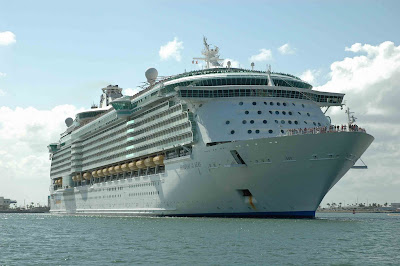It was the kind of opportunity that dreams are made of. Not only was Paolo Nespoli working in space as an astronaut but he was about to get the once-in-a-lifetime chance that us Earth-bound photographers can only dream of.
First the comparisons. Paolo and I both grew up in the 1960s harbouring dreams that we might one day fly in space. And we both got keen on photography from an early age too.
I went on to write about space, interviewing guys like Nespoli and editing a magazine called Spaceflight. He joined the Italian Air Force and became one of ESA’s astronauts, flying to the Space Station in 2007 and then again at the end of 2010, this time for a six month stay.
Both of us continue on our photographic quest - me from down here and Paolo from his temporary home 200 miles high. During his recent, and probably last, trip into orbit he enthusiastically photographed his view of Earth, downloading an impressive 667 images and capturing many more stunning views.
But on his way home, just after his Soyuz TMA-20 spacecraft undocked from the International Space Station at the end of May, Paolo had one final very special job to do - capture unique images of the orbiting outpost with both the Shuttle and Europe’s ATV ferry attached. His spacecraft stopped about 200 metres away and the Station tilted to present a better view.
Paolo took his photos through a small window in the Soyuz orbital module before returning to his seat in the descent module alongside crewmates Dmitri Kondratyev and Catherine Coleman for the landing.
"This was a complex and delicate manoeuvre that could have caused serious problems if not executed properly, but I felt it was worth the risk," says Paolo, who had only few seconds to admire the view for himself.
"Taking these pictures was not as straightforward as aiming the camera and shooting," he explained.
"When we undocked, we were already strapped in our seats wearing spacesuits. Our suits and the three hatches between the landing and orbital modules were leak-checked and normally after undocking the seals are not broken any more because retesting them costs oxygen – and there is not so much of it onboard."
The problem for Paolo was that the tiny window where the pictures needed to be taken was in the orbital module – already then partly depressurised.

He had to remove his gloves, unstrap from his seat, float to the hatch, repressurise the forward module and open the hatch.
"I had to slide over Dmitry, paying attention not to hit the manual controls, and go up to the orbital module where I had prepared the cameras before hatch closure," he said.
Paolo recorded stills and video, alternating them while paying attention to the composition. "The position of the Earth, the reflections on the glass of the window - and I had to make sure that the lens was in the centre of the window.
"I really prayed that these would be good, since I was conscious of their value. But what was done was done – and I quickly forgot them when I had to concentrate on redoing the hatch and suit leak checks, and pick up the reentry and landing procedures."
It was not until a number of days after landing when his precious camera cards were retrieved from the capsule that his incredible photos of an orbiting Space Station and Space Shuttle could be viewed.
He described taking the historic photos as an honour. "Since I was a kid, photography has been a hobby dear to me and all through my life its has brought me to unusual places and made me live unexpected experiences," he said.
"Like a photographer who has a gorgeous model in front of him, I was more concentrating on getting a good technical and artistic product than admiring it.
"I saw the view when changing from still to video images, but I purposely limited looking because I know I would have been mesmerised by the beauty of it."





















































